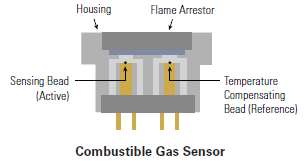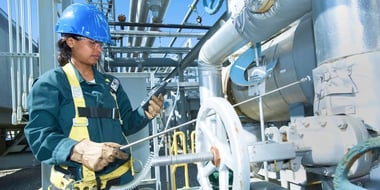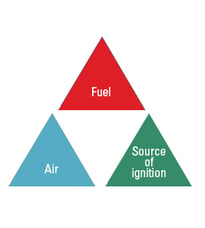Consumer electronic waste is a serious problem. Americans, for example, replace their cell phones every 22 months, on average, leading to over 140 million cell phones in US landfills annually. Over time, the components in those phones break down, allowing toxic substances to leach into the surrounding soil and water systems. The problem is so significant that electronic waste is often exported, sometimes illegally, to developing countries where it winds up in vast toxic wastelands.
Some countries have taken a proactive approach to reducing the impact electronic waste has on the environment and human health. In 2011, the European Union passed Directive 2011/65/EU prohibiting the sale of electronics that include hazardous substances like lead, cadmium, mercury, hexavalent chromium, polybrominated biphenyls, and polybrominated diphenyl ethers. This includes the sale of items made by manufacturers outside of the EU.
The value of such legislation is clear. Repeated exposure to lead, for example, can cause significant health risks such as kidney failure, high blood pressure, and cognitive decline. Even when contamination levels are low, exposure can be devastating.
What do Gas Detectors Have to do with Electronic Waste?
Simply put, a company that sells life-saving equipment must also operate in a way that prevents harm to human life. Gas detectors are critical safety equipment, so we must also be sure that those same gas detectors don’t cause harm to human health once they’re no longer in use.
At Industrial Scientific, we sell our gas detection equipment in many European countries that require compliance with the prohibited substance regulations, so our instruments comply with those environmental regulations.
The Restriction of Hazardous Substances Standard (RoHS) helps limit exposure to chemicals in electronics. Despite the fact that many manufactures have already taken steps to eliminate hazardous substances from their gas detectors, there is still an environmental impact. For example, if you have hundreds of gas detectors on site and they only last a year, a significant number will end up in landfills.
Even without the hazardous substances prohibited by the European Union, disposable gas detectors can harm the environment.
How to Make Your Gas Detection Program More Environmentally Friendly
The answer is simple: reduce, reuse, and recycle. The familiar words have found their way into our daily lives. At home, we reuse items whenever possible and then recycle them when we’re done. We carry reusable tote bags to the grocery store. We take care to properly recycle batteries.
You can reduce, reuse, and recycle your gas detectors as well.
1. Reduce the Number of Gas Detectors
Do you keep a pool of extra instruments around just in case an instrument fails? There are a few ways to reduce the number of instruments you own, including service programs and fleet management features.
Service Programs – When one of your instruments needs to be repaired, you can order the parts, wait for delivery, and then service the instrument as you have time, using a backup instrument in its place. Days or weeks may pass by. You can virtually eliminate the need for extra monitors and hassle of the entire process by using a gas detection service program that uses software to check the status of your instruments and provide replacement parts or instruments automatically.
Fleet management – You can reduce the number of gas detectors you need on site by assigning instruments to specific users and then easily changing those assignments. Keep only the total number of instruments that may be in use at any one time, then allow users to assign themselves to those instruments as they check them out. You will greatly reduce not just your impact on the environment, but also your overall gas program budget
2. Reuse Gas Detectors
A well-made gas detector can last years if you maintain it properly. Look for upgradeable firmware, replaceable batteries and sensors, and other service features that can help you extend the life of a monitor and reduce your environmental impact.
Upgradeable firmware – Electronic devices can become obsolete the second we take them home, but there are gas detection manufacturers who enhance existing technology. Free firmware updates for the life of the instrument, for example, can allow you to continue to use the latest tools without throwing away hardware.
Rechargeable and replaceable batteries – Batteries are a significant source of negative environmental impact. Instruments that are designed to run for a length of time and then be discarded make a bigger environmental impact than those that allow you to recharge and/or replace the batteries. Why not spend a few dollars on a battery and then continue using an instrument for several more years?
3. Recycle Gas Detectors and Parts
When it comes to gas detection, remember to reduce, reuse, and recycle whenever possible. The components in a gas detector can often be recycled. Whether you disassemble and recycle the parts yourself or take advantage of manufacturer service programs, you can help keep gas detectors out of landfills.
Warranties – Instruments with lifetime warranties generally require the manufacturer to responsibly recycle parts.
Service programs – The same service programs that provide a replacement gas detector whenever you have a problem with your equipment also include responsible recycling.
Calibration cylinders – Calibration gas is an essential part of an effective gas detection program. To reduce waste, purchase the correct size of calibration gas cylinders. Some gas detection manufacturers can assess your calibration gas usage and help you optimize your order size. If you buy too small, you’ll be replacing cylinders more often than necessary, which is expensive and creates a bigger environmental footprint. Buy too big and you’ll likely end up with expired calibration gas, so auto-replenishment programs can improve efficiency. When it comes time to dispose of the cylinder, be sure to follow proper procedures.
While we can’t change the amount of electronic waste that is already in landfills, we can prevent the problem from growing. Reduce, reuse, and recycle as a part of your gas detection program and you’ll save time and money today while doing future generations a favor.
Learn more about our commitment to environmental responsibility.



